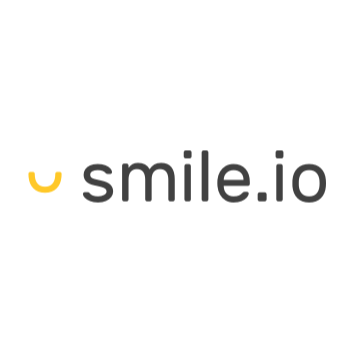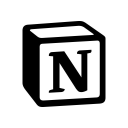How I Started A $500K/Month Stuffed Animal Care Packages Ecommerce Brand
Hello! Who are you and what business did you start?🔗
Hello, everyone! My name is Tyler Macke and I’m the 21-year-old founder of SendAFriend, an e-commerce brand that sells stuffed animal care packages.
Our core product is the stuffed animals themselves, which we offer alongside a customizable greeting card and a few small accessory add-ons. The fluffy friend gets swaddled up in blue tissue paper and packaged in our bright blue shipping box with the ‘Someone Loves You’ motif before being sent out the door.

At the age of 18, I started working on the brand and launched in July of 2018. In 2019, it remained as a side project and ended the year with about $50,000 in revenue. This year in 2020, it has become my full-time focus, and we are now on track for $5M in revenue for the year.
I am quite proud of what SendAFriend has been able to do, mostly because of our core mission. Since the beginning, we have promised to donate 10% of all revenue directly to children’s hospitals throughout the United States. This has already allowed us to donate over $250,000 to hospitals this year alone.
What's your backstory and how did you come up with the idea?🔗
I got started in the world of business when I was 13 or 14 years old and first found Photoshop. At the time, all I was trying to accomplish was some YouTube banners and profile pictures for my gaming friends. However, that quickly grew into me learning Illustrator, After Effects, and picking up more design skills every day.
By age 15, I was creating professional logos, social media branding, advertisements, videos, and more. With this, I was growing a bit of a personal Twitter network in the gaming and graphic design community. This is when my first real business came to fruition -- a sticker printing business called StickerGrub created out of a desire to get some of my work printed as a physical product.

During high school, I kept up with StickerGrub and graphic design work in my free time. I partnered with different influencers and started freelancing with companies and agencies. With this, I quickly found my passion for brand development and entrepreneurship as a whole. I found how much I love the startup stage of a business and creating experiences for people. Most of all, during my senior year, I decided college was not the path for me because of these different experiences. After high school graduation, I doubled down and focused on making an entrepreneurial career for myself.
A lot of different gigs and opportunities manifested the year or so after I graduated. A few of these opportunities had me working with large e-commerce brands, and I had realized that most of my favorites lacked a philanthropic purpose. For some reason, the idea of building such a large brand with little-to-no benefit to others didn’t make sense to me. So, I set out to create something different, and that’s when SendAFriend was born.
When developing SendAFriend, I never had a clear “Aha! Problem solved!” kind of moment. However, the general desire to give back while doing my own thing predominantly led to the creation of the business. I knew I would never feel good about building a business that didn’t have these kinds of values, so that was my focus, and thus the brand was born.
Take us through the process of designing, prototyping, and manufacturing your first product.🔗
When I began, I had very little knowledge of product development and manufacturing. Because of this, I stuck with what I knew and created the logo and branding far before I started the product sourcing. This is something that I originally would be embarrassed to admit, but looking back, it was a really good way to build the brand. Finalizing the overall look and feel first helped me make further decisions about the products, packaging, and many other elements of the business.
I knew I wanted the package's arrival to be just as special as when the customer opened up the box, and since I was positioning my product as a gift, I had a unique opportunity to surprise the recipient. This is when the idea of the “Someone Loves You” box came to fruition, which is arguably the most recognizable part of our brand to this day.

When it was time to find products, I knew purchasing from wholesalers would initially be much more feasible than having toys custom-manufactured. It would have lower minimums, lower lead time, and lower startup costs. I did some research and requested sample products from about five different US-based wholesalers. I made my decision mostly based on the quality of the sample, but also on how responsive the wholesaler was with answering emails and picking up the phone.
I think it’s super important to have a clear line of communication with your suppliers, since they ultimately are in control of your supply chain, product availability, and, in turn, your revenue.
Describe the process of launching the business.🔗
Launching the business was fairly straight forward. I didn’t have any pre-launch marketing, so I didn’t have a customer base expecting a certain product or launch date. I decided it was in my best interest to take my time with the product and website details and launch when I was totally confident in my platform. From start to finish, this took around 6 months.
Know your margin, know your expenses, and know your break-evens. It’s incredibly helpful to study these for any operational decisions you will make as a business owner.
Besides product and packaging, the only things I needed were product photos and brand images. Luckily, my brother is a full-time photographer and was right by my side to help me with those. Once our samples came in for our fluffy friends and our packaging, we did a quick photoshoot with my niece and nephew to use on the website and in early ads.

When everything was ready, I removed the password page and made a simple post to my friends on Facebook, which was followed by my aunt being my first customer. Overall, I just wanted to get some traffic on the site and make sure there were no major issues before pursuing any sort of larger marketing efforts.
All in, the business cost a little under $2,000 to launch from start to finish. About $1,500 of that coming from product and packaging. The rest of the expenses came from Shopify, website, LLC fees, and software. I financed this myself with the money I had saved up from freelance work.
Since launch, what has worked to attract and retain customers?🔗
Because SendAFriend remained a side project for the first two years of business, sales were pretty slow. I tried different marketing efforts -- influencer ads, pay per posts, Facebook Ads, etc -- but nothing was clicking and providing consistent growth. There were many times where I would be motivated, try something out, get burned, and completely lose motivation to continue. In 2019, SendAFriend showed a loss of about $20,000 primarily because of poor advertising decisions on my part. I kept my enthusiasm as high as I could and pushed forward, knowing the brand was something special, but it was tough when things weren’t clicking.
Find a balance. Give yourself time to relax, to do your hobbies, to cook, to eat, to go to the gym, to be with friends. I quickly realized how unhealthy and toxic things can be for yourself and your team when you’re overworked.
It wasn’t until January of this year -- when I brought on a media buyer -- that things started picking up. While I have a great understanding of how paid media buying works and what kind of content to use, I find working inside the accounts themselves a bit challenging and time-consuming. Outsourcing this was one of the best decisions I’ve made with the business.
From that point on, the strategies that have worked for us have been:
Organic Style Content
We have primarily used meme-style content to drive conversions and boost the performance of our creatives. The key is getting a viewer to stop their scroll for a split second and have them watching content that they think isn’t an ad. Doing so will help your content fit into their organic Facebook or Instagram feed and mimic the style of content they are naturally consuming.

Retargeting
We are currently generating over 25% of our revenue from Klaviyo from email flows and campaigns. We have about ten different automated flows firing, as well as two to three campaigns every week. Using a pop-up, we’ve grown our list to almost 500,000 subscribers, with over half of those being engaged in the last 180 days. We keep our viewers interested in cute, quirky emails and limit the amount of promotional and sales emails we are sending. This has ultimately resulted in a higher engagement rate, which in turn has resulted in a higher % of revenue generated from these efforts.

Campaign Calendar
We've stayed at least two to four weeks ahead of our campaigns at all times so all members of the team can comfortably hit deadlines. Having this campaign calendar has helped us tremendously with regularly sending out emails, posting daily on social media, and generating a greater feeling of community within SendAFriend’s customer base.
How are you doing today and what does the future look like?🔗
Our gross margins are currently about 45%. This is after we make our monthly 10% donation and the cost of goods, shipping, and packaging are deducted. Past that, our bottom line is around 12% after marketing and all other expenses are paid.
Staying profitable through our growth has been something I’m quite proud of, especially with how expensive this year has been for the business. We moved into a 7,500 sq ft office, remodeled multiple rooms, furnished it with desks, computers, studio equipment, warehouse racks, forklifts, equipment, and shelves.

We have also hired over 20 people, paid for all product orders without going into debt, purchased a box truck, hired drivers, and more. Despite all this, we have continued to grow profitably month-to-month and have remained self-funded.

Moving forward, my goal is to get our bottom-line above 15% and, eventually, closer to 20%. Since we have had quite a few startup costs with the new office, this should be fairly achievable in the next year or less. We are doing some things to help us get there quicker as well, most of which revolve around AOV and LTV. By increasing the average value of a purchase, as well as how often that customer is purchasing, we should be able to lower the impact our marketing costs have on the overall margin.
Long term plans include an entry into retail and gift shops, maybe licensing deals, as well as creating some unique services and programs focused around the children’s hospitals. We already have a strong gift-in-kind donation program ready to launch but have hit some roadblocks with COVID-19 and the hospital’s availability for such programs. I’m patiently awaiting a vaccine and for things to get back closer to normal in the world!
Through starting the business, have you learned anything particularly helpful or advantageous?🔗
Hire people you can trust. Family or friends will have your back. With outside hires, trust your gut and make sure they are going to be someone you can rely on as well. At the end of the day, I know all members of my team will support my business and will always have its best interests in mind.
Know your numbers. Once I realized I could start trusting numbers to grow the business, my anxiousness around expenses went down. Know your margin, know your expenses, and know your break-evens. It’s incredibly helpful to study these for any operational decisions you will make as a business owner.
Stick to your values. Because of a decision I made early on to donate 10% of all revenue, we have raised over $300,000 for children in need. This makes us feel great about what we’re doing and I know that everything I put into the brand is for the greater good. Nothing feels better than writing those donation checks while realizing there are bigger ones to come.
Find a balance. I quickly realized how unhealthy and toxic things can be for yourself and your team when you’re overworked. Balance is important. You will always have work in the morning, tomorrow, next week, next month, and next year. Give yourself time to relax, to do your hobbies, to cook, to eat, to go to the gym, to be with friends. Whatever you can do to relax, do it. It’s far more important to maintain that balance than it is to ignore your personal life and mental health and create an unhealthy environment.
What platform/tools do you use for your business?🔗
- Website: Shopify
- Shipping: EasyShip
- Email: Klaviyo, Spin-a-Sale, G Suite
- Loyalty Program: Smile.io
- Customer Support: Zendesk
- Internal Communication: Notion, Slack, Zoom
- Graphic Design: Figma, Illustrator, Photoshop
- Personal Day to Day: Google Calendar
What have been the most influential books, podcasts, or other resources?🔗
One of the things I’ve found influential is following other founders on Twitter. I think it’s super helpful to stay current with what others in the field are sharing. Seeing every day people show off their business in different stages of success is extremely motivating. It’s helpful to engage with them, introduce yourself, and ask questions if they are willing to answer. Networking is one of the best things you can do as your business grows.
Aside from that, the Shopify Masters podcast has always been a good source of inspiration when I need to hear some fresh takes on marketing or growth. Reddit is also (sometimes) a good source of founder’s stories and advice for getting started.
Advice for other entrepreneurs who want to get started or are just starting?🔗
I think it’s important to realize that nothing is more valuable than the experience you gain through any endeavor. Whether or not your business is a success, you will be able to learn invaluable knowledge that is not taught in a book or a course or a video.
It is also important to remember that not everything is going to be perfect, especially in the beginning. Embrace the imperfections and see how you can improve, and realize that it’s part of the journey. In all honesty, those early moments were some of my favorites because it was when my friends and family pulled together and made things happen. They believed in the business as much as I did.
With all of this, I highly recommend doing something you believe in, especially for when times are tough or you’re losing money. SendAFriend has had its moments, but I stuck to my values and kept going because I loved the cause and believed in it from day one. If you don’t believe in your business, why would your customers?
Are you looking to hire for certain positions right now?🔗
Our fulfillment team is actively growing, and our marketing team is starting to grow as well. We just hired a marketing intern to test the waters with different channels and get some extra hands to work on our advertising goals. We will likely hire a designer to help with emails and social media very soon as well.
Where can we go to learn more?🔗
If you have any questions or comments, drop a comment below!

Download the report and join our email newsletter packed with business ideas and money-making opportunities, backed by real-life case studies.

Download the report and join our email newsletter packed with business ideas and money-making opportunities, backed by real-life case studies.

Download the report and join our email newsletter packed with business ideas and money-making opportunities, backed by real-life case studies.

Download the report and join our email newsletter packed with business ideas and money-making opportunities, backed by real-life case studies.

Download the report and join our email newsletter packed with business ideas and money-making opportunities, backed by real-life case studies.

Download the report and join our email newsletter packed with business ideas and money-making opportunities, backed by real-life case studies.

Download the report and join our email newsletter packed with business ideas and money-making opportunities, backed by real-life case studies.

Download the report and join our email newsletter packed with business ideas and money-making opportunities, backed by real-life case studies.
















